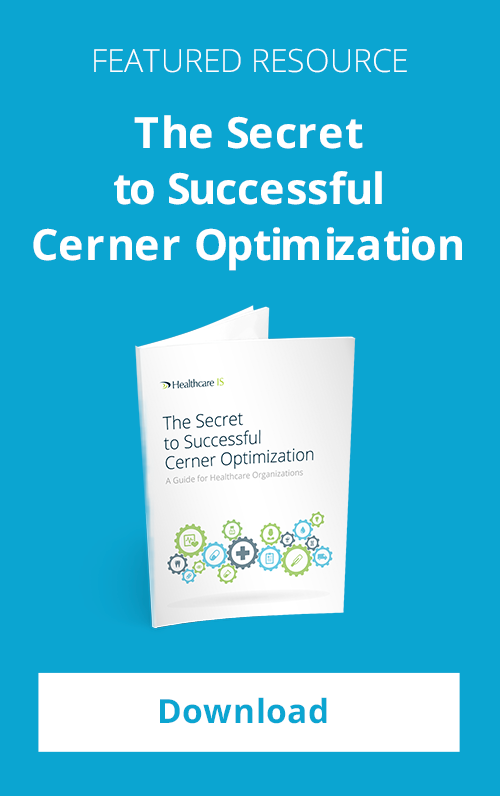As far as projects go, a Cerner implementation or conversion is rather substantial. It’s a long process that involves a lot of moving parts and incorporates a wide range of stakeholders and contributors. In order to successfully implement such a complicated project, it is imperative to have top-notch project management. Here are five tips on how to do that from the project management pros:
Develop a Project Objective Statement
The project objective statement is a mission statement of sorts. It is designed to outline the project’s primary objective in a way that is relatable to all the key stakeholders. Oftentimes, this statement reflects the budget realities and incorporates the organization’s revenue expectations. It serves the purpose of keeping everyone engaged and focused on the goal at hand.
An effective statement can be deployed almost like a tagline. Whenever project communications are sent out, the project objective statement should always be placed front and center to ensure everyone remains focused on the primary goals. Should any internal distractions occur that threaten to derail the project, the project manager can always point back to the objective statement to bring the attention back where it belongs.
The project objective statement should also reflect the priorities of the various departments. For example, the informatics side is concerned with making sure that the system works properly and helps the clinicians more efficiently administer patient care while the finance side is concerned with making sure billing and patient services are not disrupted.
[eBook: The 6 Phases of a Successful Cerner Implementation]
Devising a powerful project objective statement early on is critical as it should not be changed. A Cerner implementation has a clear-cut conclusion with a defined path to get there. Significant deviation from that path is a recipe for problems and can result in scope creep.
Compile the Contact List of Prospective Project Teams Based on Relevant Disciplines
Sometimes the simplest tasks can be among the most important. That is especially the case with Cerner implementations. Tracking down the contact information of everyone involved in the project and distributing a contact list might seem mundane, but it is absolutely crucial. Compiling this list can help with transparency and increase communication across the project spectrum. When everyone knows the contact information of everyone else on the team, it discourages them from avoiding potential problems they have encountered.
From a practical perspective, a contact list provides the clear benefit that it enables those participating in the implementation with an easy way to communicate with one another. There are other less obvious advantages as well, however. A thorough contact list gives everyone involved in the project a chance to know who is responsible for what, even if they don’t’ regularly collaborate with that person. Contact lists also take away the inefficient excuse occasionally used by team members who claim they can’t move forward because they don’t know who to contact about a barrier .
Develop a Project Charter
Think of the project charter as the guide. It basically fleshes out many of the above elements and combines them into one overarching document that serves as the foundation for the entire Cerner implementation. The charter requires a significant amount of upfront organizational work by the project manager, but really pays off throughout the rest of the project. For a Cerner implementation to have any hope of proceeding smoothly, a good project charter must be created and that plan must be followed closely throughout the process..
If the project charter is the guide, the RACI (Responsible, Accountable, Consulted, and Informed) Matrix is the addendum. The RACI Matrix establishes roles and responsibilities. It essentially brings order to the team structure. It’s an extremely valuable tool when it comes to making sure all the bases are covered and every discipline/functional department has an owner. It also helps limit internal disputes and finger pointing because it clearly defines each team member’s expected contributions.
Develop Communications Plan
A contact list is a great first step, but it’s not enough. A more robust communications plan must also be put forward. In many ways the technical aspects of a Cerner implementation and the actual software upgrades involved are the easy part. Keeping all of the stakeholders on the same page and moving in the right direction in an efficient fashion that corresponds to the timeline is the real challenge. That’s where the communications plan comes into play.
The communications plan builds on the contact list, the project charter, and the RACI Matrix and outlines exactly which people should be notified about which issues. As with everything, the communications plan is only as good as those who execute it, but urging leadership to stress adherence goes a long way.
Devise and Distribute a Project Plan
The project charter serves as a high-level guide, but it is the project plan that keeps everything on track. Unlike the charter which covers the major topics, the project plan is a detailed schedule that lays out exactly what tasks are to be done on a daily basis and by whom. It also sets forth start and end dates for each task as well as delineating where each assigned task fits in among the larger project.
The project plan is what keeps all of the project team members on schedule and cognizant of how to best manage their time. Without it, there is no way to maintain a structured timeline and make sure all of the details are being handled.
Learn what it takes to master the complicated process of implementing the Cerner EHR platform into your organization by downloading our Ebook.



Comments